November 3, 2017
Air Date: November 3, 2017
FULL SHOW
SEGMENTS
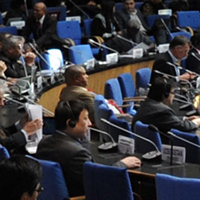
Moving the Paris Climate Deal Forward
View the page for this story
Delegates from more than 190 nations begin meeting in Bonn, Germany November 6th to work on implementation of the Paris Climate Agreement during the 23rd annual meeting of the UN Climate Convention. The nation of Fiji is president of this meeting called COP23, which also includes a major civil society and business gathering focused on fighting global warming. With the US stepping back, Living on Earth Host Steve Curwood discusses the new leadership role for China and the objectives for COP23 with UMass Boston global governance expert Maria Ivanova. (10:17)
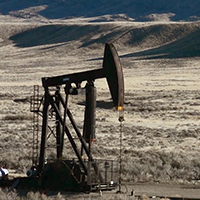
Drill, Baby, Drill!
View the page for this story
The US Department of the Interior’s new four year strategic plan calls for maximizing fossil fuel extraction from public lands, according to a version leaked to The Nation reporter Adam Federman. Drilling in the Arctic National Wildlife Refuge (ANWR) is part of the plan. That document also has no mention of climate change or climate science. Adam Federman tells host Steve Curwood that the strategic plan is part of the Trump Administration’s larger effort to secure America’s “energy dominance”, and reveals a new agency objective: policing the US-Mexico border. (06:33)
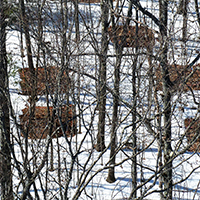
Measuring the Risky Feedback Link Between Soil Carbon and Global Warming
View the page for this story
Since 1991, scientists have been measuring carbon loss from soils heated to temperatures expected by 2100 if fossil fuel burning continues unabated. The test sites are in the Harvard Forest, a field laboratory in Central Massachusetts. The concern is that as global warming releases soil carbon it will stimulate even more warming, and the study attempts to quantify the risk. Host Steve Curwood spoke with the study’s lead author, Jerry Melillo, Distinguished Scientist at the Marine Biological Laboratory at Woods Hole. (11:22)
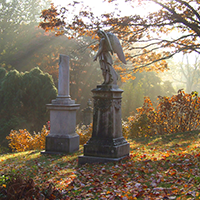
The Living and Dead in Good Company
View the page for this story
Massachusetts’ Mount Auburn Cemetery is renowned as the final resting place for American luminaries including Henry Wadsworth Longfellow, Fannie Farmer, and Charles Sumner. But as America’s first garden cemetery, it’s also a rest stop for migrating birds every spring and fall. John Harrison and Kim Nagy, co-authors of the book Dead in Good Company: A Celebration of Mount Auburn Cemetery walk through the cemetery with host Steve Curwood, observe the wildlife and visit the deceased. (12:40)
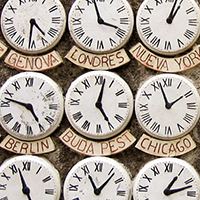
The Clock Ticks for Daylight Saving Time
View the page for this story
The sun may be setting on a familiar fall tradition in much of Europe and America. The end of Daylight Saving Time sends clocks back an hour, and a Massachusetts legislative commission has found the earlier sunset ushers in more energy use and crime, with an uptick in accidents and illness when clocks “spring forward” in March. The Mass commission recommends effectively sticking with daylight saving year round, if the rest of the region agrees. Commission member Peter Shattuck and host Steve Curwood unpack the surprising benefits of springing forward - and staying there. (05:42)
Show Credits and Funders
Show Transcript
HOST: Steve Curwood
GUESTS: Maria Ivanova, Adam Federman, Jerry Melillo, John Harrison, Kim Nagy, Bill Martin, Peter Shattuck
[THEME]
CURWOOD: From Public Radio International, this is Living on Earth.
[THEME]
CURWOOD: I'm Steve Curwood. The 2017 UN climate conference kicks off with the US taking a back seat.
IVANOVA: The Paris Agreement could be concluded largely because of the leadership of China and the United States. Now, one of those countries has stepped off the stage -- It leaves China. China has realized that investing in renewables will forward its economy. It will open new markets. It will make it the leader in the world.
CURWOOD: At the same time the Trump Administration plans to throw federal lands wide open for oil, gas and coal leasing.
FEDERMAN: This is in the context of an administration that has pushed for what they're calling “energy dominance. They are essentially offering up anything and everything, and industry will have its chance to take what it wants.
CURWOOD: That and more, this week on Living on Earth. Stick Around!
[NEWSBREAK MUSIC: Boards Of Canada “Zoetrope” from “In A Beautiful Place Out In The Country”, Warp Records 2000]
[THEME]
Moving the Paris Climate Deal Forward

Thousands of leaders from every sector of society around the world turn out for UN climate conferences. (Photo: UNClimateChange, Flickr CC BY 2.0)
CURWOOD: From PRI, and the Jennifer and Ted Stanley Studios at the University of Massachusetts Boston, this is Living on Earth. I’m Steve Curwood.
The 23rd Conference of the Parties to the UN Framework Convention on Climate Change -- or COP 23 in UN jargon -- kicks off November 6th in Bonn, Germany, under the leadership of Fiji. President Trump wants to pull the US out of the historic 2015 Paris Climate Agreement, the first accord to include worldwide emissions reductions. Yet US diplomats will still be involved at Bonn, as the world’s nations seek to implement the Paris commitments.
Maria Ivanova, is an expert in global governance at the University of Massachusetts, Boston, and she joins us now. Welcome to Living on Earth.
IVANOVA: Thank you very much.
CURWOOD: So, the beginning of November brings the Conference of the Parties, number 23, of the United Nations Framework Convention on Climate Change. What do you think is the potential for this meeting in terms of making constructive progress on, say, the commitments that nations have signed up for under the Paris Climate agreement?
IVANOVA: So, it's important to note that this particular meeting is not one about political agreements. It is a technical meeting. It's about technical agreement. So, the Paris COP was about political agreement, and so you gathered a lot of heads of state and had to make big political progress. This one is about the implementation of the Paris Agreement, so by definition it will aim to have constructive progress. I think the prospects are real that that can be achieved because the issues are very concrete. Countries will now have to negotiate how to do global stock-take. This is one of the key features of the Paris Agreement, for example, that every five years countries will gather and assess what they have implemented so that they could ratchet up their commitments. But how do we take stock of this? Countries don't know yet. They have to negotiate it.
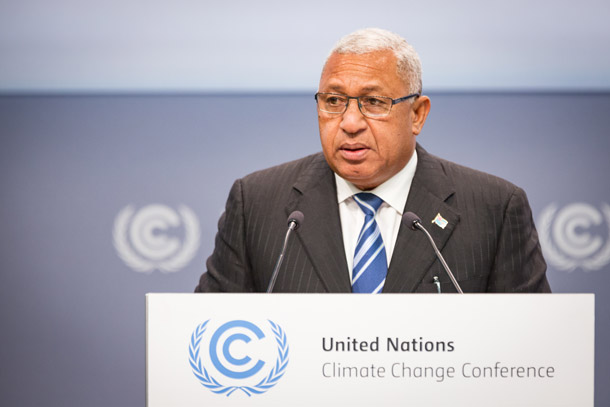
Right Honorable Frank Bainimarama, Prime Minister of the Republic of Fiji, at the COP 23 preparation meeting in May. (Photo: UNClimateChange, Flickr CC BY-NC-SA 2.0)
CURWOOD: What's interesting about this meeting is that the chair of these meetings rotates among countries. Fiji, which is a small island state, is actually the chair this time, but they're doing it in Germany, I guess for logistical reasons.
IVANOVA: Indeed, any country can be the chair and usually hosts the conference in their country. One would expect that everybody will be going to Fiji, but we all know what we are pushed to do to reduce our impact on climate change. We have to emit less. Where most of us working in these, on these global issues emit most is through airplane travel, and these conferences gather an extraordinary number of delegates, in the thousands, not only from governments but also from companies, from civil society, anyone who cares about these issues descends upon the city where this conference convenes, and so the thinking was, no, we cannot host that many delegates for that long. It's usually two weeks. It is not only the carbon emissions, but it is also the impact on the local ecosystems, the pressure that that many people put on a fragile environment, so I think Fiji is sending a very powerful signal that we realize what the issues are, and we're ready to work with them but we're not giving up our position as leaders of these issues.
CURWOOD: What in particular do you think will come out of the UN climate summit there in Bonn because Fiji is in charge?
IVANOVA: What is really important to watch is the grand coalition that the Prime Minister of Fiji is about to announce. He talked at the UN General Assembly, urging for not only countries but also companies, civil society, individuals to unite into a grand coalition to implement the commitments, and I think this will be the qualitative change from what we have seen before. All of these conferences have been government driven and aimed at governments.
Therefore, we are startled when one government wants to withdraw, yet, if we have this grand coalition, if the vision of Fiji actually gets realized, we will have everybody act just like they gathered in Paris. I think then this kind of vulnerability will transform into strength.
CURWOOD: So, this is a year where we've seen hurricanes, floods, fires that hit everywhere from Houston to the Caribbean to Bangladesh. How do you think these climate and weather related disasters will affect behavior at this conference?
IVANOVA: We have indeed seen a lot of disasters this year, and I think they have exposed clearly the heart of the matter. Climate change is happening. It is real. It is here, and it affects all of us. The narrative used to be developing countries are most affected. It still is true. They are most affected, but all of these disasters have touched us deeply all around the world, so I think there will be ever more reason for countries now to commit to that constructive progress, but unfortunately the vacuum of leadership that the United States now presents at this conference will be felt, but it will likely not remain a vacuum for long. It will be filled most likely by China.
Fijian canoe arrives in Bonn as a symbol of resilience and unity 4 #COP23 https://t.co/80wHPtWeXC An example of Fijian skills and ingenuity pic.twitter.com/rQx5Dg1B9z
— UN Climate Change (@UNFCCC) October 26, 2017
CURWOOD: Let's talk about the United States' role. So, under the rules, while President Trump said he wants out from the Paris Climate agreement, in fact, takes until 2020 to be literally out, we have a delegation going. Who are they and what are they expected to do?
IVANOVA: So, the United States has to send a delegation. It still is a party. The US delegation will be led by Tom Shannon who is the Under Secretary of State for Political Affairs. Another important member of the delegation will be Trigg Talley, who is the Director of the Office of Global Change at the State Department and who has been a very important negotiator in all of the climate change negotiations to date. So, in a sense the US delegation will operate in a constrained space. It will not have the same political bandwidth as it had with previous administrations, but I see the role of the US delegation, in the way it is currently comprised, not as a showstopper and not as an obstacle but as an impetus to focus on the rulemaking, on the transparency, because it's in the interest of the United States to continue engaging. What is dangerous is, if the United States decides to ratchet down its nationally determined contribution, “NDC,” and that might trigger a whole avalanche of other countries doing the same.
CURWOOD: You suggest that China will take the leadership of this process now. How will that manifest?
IVANOVA: China is likely to take the leadership because we had the Paris Agreement. The Paris agreement could be concluded largely because of the leadership of China and the United States. The two countries decided that it is in our interest to move forward to be champions of this agenda. Now, one of the, those countries has stepped off the stage. It leaves China. China has realized that investing in renewables will forward its economy. It will open new markets. It will make it the leader in the world. We listened to Chinese President Xi just a few days ago, a three hour speech, about China's new role in the world in a new era where China will present new alternatives to countries around the world.
CURWOOD: So, what about finance for island and vulnerable countries to both adapt to what's coming in and help mitigate the continued climate disruption?
IVANOVA: Finance is a very important issue, and it has come up at every single one of those conferences. Countries committed and re-committed to $100 billion dollars a year for developing countries to address climate change. That money has not been forthcoming.
However, what has changed profoundly is the ability of business to contribute and engage in delivering on projects, exactly the kinds of projects that you're mentioning, Steve, that require investment, but these are infrastructure projects. These could be led by businesses.
So, this is one of the issues that will be discussed by governments during the Bonn conference. How do you account for finance? Is it just the finance that you're providing as a public entity, or can you account for the finance that you are mobilizing as a public entity through private sources? Mars, for example is one of the companies that announced $1 billion dollars for climate change, and they're investing it in developing countries.
We unfortunately don't have a way of figuring out what is being invested where by non-public entities and I think that's a challenge. How do we create that accounting system? How do we create, create that knowledge base that we know what the money flows are, where they go, and how they can stimulate and mobilize additional funding?

Maria Ivanova is a global governance expert and Professor at the University of Massachusetts, Boston. (Photo: UMass Boston)
CURWOOD: A billion dollars in candy bars, huh?
IVANOVA: [LAUGHS] No, a billion dollars to ensure the ability to produce more candy bars because, where does chocolate come from? Cocoa. Where is cocoa grown? In developing countries, in West Africa. Who's going to be affected most by climate change? Those countries, and so Mars is putting their money where their mouth is, where the chocolate is.
CURWOOD: Maria Ivanova is a Professor of Global Governance at the University of Massachusetts, Boston. Thanks so much for taking the time.
IVANOVA: Thank you for having me.
Related links:
- UNFCCC COP23 November 2017
- More on Fiji’s vision for the Bonn COP23
- About Professor Maria Ivanova
CURWOOD: Coming up, counting carbon and global warming risk from warming soil. That’s just ahead here on Living on Earth.
ANNOUNCER: Support for Living on Earth comes from the Gordon and Betty Moore Foundation, and from a friend of Sailors for the Sea, working with boaters to restore ocean health.
[CUTAWAY MUSIC: Rob Mullins Band, “America the Beautiful” on We Remember 911 Nine Year Anniversary, by Katharine Lee Bates/Samuel A. Ward, Rob Mullins Entertainment]
Drill, Baby, Drill!
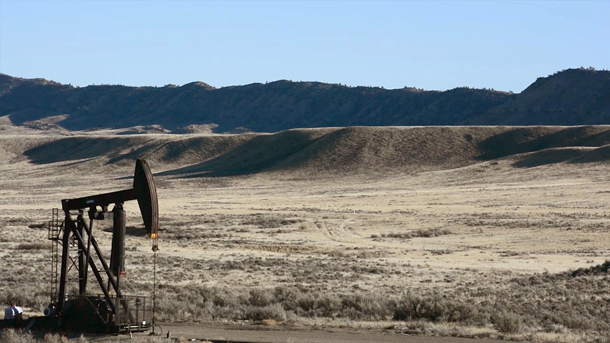
Oil production on US Interior Dept. land in Wyoming. (Photo: BLM Wyoming, Flickr CC BY 2.0)
CURWOOD: It’s Living on Earth. I’m Steve Curwood.
Donald J. Trump ran on a campaign promise to roll back industry regulations and boost the fortunes of coal and other fossil fuels. And since taking office Mr. Trump has worked to fulfill that promise, with industry-friendly policies front and center at the Environmental Protection Agency and the Department of Interior. A leaked draft of Interior’s four-year Strategic Plan calls for massive fossil fuel extraction from public lands with no mention of climate change impacts.
Here to discuss the plan is Adam Federman, who broke the story in “The Nation.” Adam, welcome back to Living on Earth.
FEDERMAN: It's great to be here. Thanks for having me.
CURWOOD: So, if this new strategic plan by the White House leaves out mention of climate change, what does it focus on in terms of Department of Interior priorities?
FEDERMAN: Well, the heart of the blueprint, the strategic plan for the next five years, is oil and gas drilling, not surprising, and really the speeding up of everything that goes into opening up public lands for development. And it's also important to note that this is happening against the backdrop of an aggressive regulatory rollback. So, on the one hand, you've got the aggressive push to open up both on- and offshore leasing and then the rollback of what many consider to be common sense, even modest, environmental protections.
CURWOOD: Adam, remind us of the kinds of climate related impacts to Department of Interior lands or resources that the Obama administration foresaw.

Coho salmon are among the many resources managed by the Department of Interior being affected by climate change. Warmer streams, decreased snowmelt and wildfires threaten aquatic wildlife populations, in addition to dams and mining. (Photo: Bureau of Land Management Oregon and Washington, Flickr CC BY 2.0)
FEDERMAN: Yeah, you know, it's really important to note the fact that both climate change science and dealing with the realities of climate change on the ground now are really front and center for the Department of Interior. The department is made up of 10 agencies, including Fish and Wildlife, Bureau of Land Management, and the US Geological Survey, all of which do extensive climate change research and manage some of the impacts of climate change.
Your listeners may remember a recent story involving one of the top climate scientists at the department, a policy adviser who was reassigned in this big, department wide reshuffling, Joel Clement, and he since has become a whistleblower and has actually resigned because he was moved from his climate science position to an accounting post in the office collecting royalties from the fossil fuel industry. So, he had raised the alarm about the impacts of climate change on native communities in Alaska where coastal erosion and rising sea levels are literally threatening people's livelihoods. So, you know, that's something that the Department of Interior has to confront and the fact that this report omits any reference to climate change indicates that they're planning to, I guess, ignore it.
CURWOOD: Adam, there have been recent reports of other ways the Department of Interior is hushing discussions of climate change. Please outline those for us briefly.
FEDERMAN: Yeah, I think like other federal agencies, the Department of Interior has also engaged in the same kind of scrubbing of its websites of references to climate change. I've spoken with several sources who told me that including climate change in research papers or titles of research papers or even in press releases, it's not a written policy, but it's understood that the language won't be used. So, it's kind of an unspoken policy, but it's one that I think will have far reaching impacts over the course of the next five years.

The Department of Interior intends to expedite the permitting process for both on- and offshore leasing, according to the draft 2018-2022 Strategic Plan. (Photo: Robert Seale, Flickr CC BY-NC-ND 2.0)
CURWOOD: Now, to what extent is this focus on energy extraction a departure from what we've seen previously from the Department of Interior when it comes to strategic plans?
FEDERMAN: Yeah, well, there's always a section on utilizing our natural resources, you know, in every strategic plan, this one is no different in that regard, and in fact this is a blueprint that covers everything from outdoor recreation, tribal and insular responsibilities and generating revenue and using public land to produce energy. However, you know, this is in the context of an administration that has pushed for what they're calling energy dominance, and, you know, we're just beginning to see what that really means and what it means is that they are essentially offering up anything and everything onshore and offshore.
We have upcoming lease sales in December in Utah, New Mexico and several other western states in which they are just putting everything on the table. The BLM used to defer a lot of acreage, in fact, when it was in areas that were considered sensitive because of endangered species or critical habitat, and they seem to be not doing that at all anymore, so they're offering, for example, in Nevada something like 400,000 acres, and this is a state where the industry has shown relatively little interest in oil and gas production, so they're throwing everything at the wall, and industry will have its chance to take what it wants.
CURWOOD: So, Adam, if Interior acts on this strategic plan, essentially offering up, you know, every drop of oil, every molecule of gas, every pound of coal for extraction, how interested is the fossil fuel industry in this?
FEDERMAN: Right. Well, you know, early signs are that the oil and gas industry and the coal industry are somewhat reluctant to invest in new projects, given the relatively low price of oil and the very bleak outlook for the future of coal. One of the big moves of the administration and the department was to lift this moratorium on federal coal leasing which they've made great fanfare out of, but what we've seen since then actually is that many companies have actually withdrawn their lease applications for new mines on federal land. And the other thing is that obviously the price of oil is fluid and things could change very quickly.
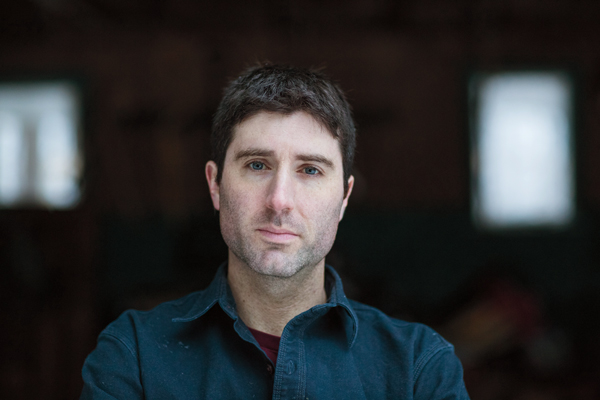
Adam Federman is a reporting fellow with the Investigative Fund of the Nation Institute, covering energy and the environment, and has written for many publications including The Nation, the Guardian, Gastronomica, and Earth Island Journal. (Photo: Adam Federman)
CURWOOD: By the way, what does it do in terms of border protection?
FEDERMAN: That's one of the interesting things about this strategic plan is that it actually includes a new section that was not even mentioned in the previous strategic plan, and it's perhaps worth pointing out that these are produced every three or four years, and there are broad policy guidelines laying out the department's philosophy and sort of where it intends to go. So, one of the six mission areas, as they're called, is Protecting our People on the Border, and it talks about how Department of Interior manages something like 40 percent of the southern border, and, given the Trump administration's emphasis on border security, that Department of Interior itself would be stepping up its partnership with law enforcement agencies and aggressively policing immigration and also drug smuggling.
CURWOOD: Adam Federman is a Reporting Fellow with the Investigative Fund at the Nation Institute. Adam, thanks so much for taking the time with us today.
FEDERMAN: Thank you.
Related links:
- The Nation: “Exclusive: The Interior Department Scrubs Climate Change From Its Strategic Plan”
- The leaked draft of the 2018 – 2022 Department of the Interior Strategic Plan
- The 2014 – 2018 Department of the Interior Strategic Plan
- Joel Clement’s op-ed in the Washington Post: “I’m a scientist. I’m blowing the whistle on the Trump administration.”
Measuring the Risky Feedback Link Between Soil Carbon and Global Warming

Snow melts above heated cables, revealing the test plots for the soil warming experiment. (Photo: courtesy of Audrey Barker-Plotkin, Harvard Forest Staff Scientist)
CURWOOD: For the past 26 years, a team of scientists has been measuring carbon levels in the soils of the Harvard Forest, a field laboratory nestled in the hills of Massachusetts. Back in 1991 the team laid down underground electrical cables to heat test plots of soil. They’ve been monitoring the soil ever since, and have measured two periods of speedy carbon loss, separated by a period of stagnation. The research puts numbers on concerns that as temperatures rise and heat the soil the released carbon will trigger even more warming.
Jerry Melillo, Distinguished Scientist at the Marine Biological Laboratory at Woods Hole, led the study. Jerry, welcome to Living on Earth.
MELILLO: Thank you very much, Steve.
CURWOOD: So, describe this experiment for us in the Harvard Forest, and what were you trying to measure?
MELILLO: Well, the experiment is a long term, soil warming experiment. The big question is, as the world warms, will the microbes in the soils decay soil organic matter matter more rapidly and thereby putting carbon dioxide into the atmosphere which would accelerate warming, which would then feed back to the soil system such that, in the end, warming would feed itself?
CURWOOD: So, how do you do this? What was your technique to make an experiment?
MELILLO: So, we have placed resistance cable in the soils at the Harvard Forest. The cables are 10 centimeters in the soil and they're 20 centimeters apart, and we set up 18 plots in this study that we've reported on in "Science". Six of the plots received the heating cable, and electricity was turned on in those plots so that they were heated. Six more of the plots had the cables installed, but the electricity was never turned on, and then finally, of the 18 plots, six were true controls that were basically laid out, but nothing was ever done to them.
And then over the course of time we made a whole series of measurements of CO2 fluxes from the soil to the atmosphere, measurements of various aspects of microbial community structure and function, and carried on this experiment for 26 years. This is its 27th year, and it's still going strong.
CURWOOD: So, this is like an electric blanket, it sounds like, huh?
MELILLO: An embedded electric blanket, exactly.
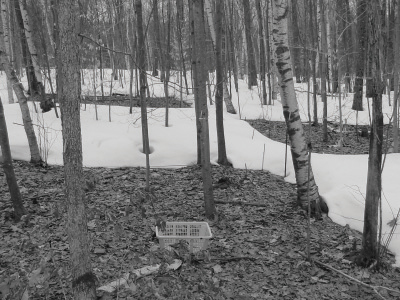
Several snow-free heated plots in late winter. In addition to raising soil temperatures and altering ecosystem processes, soil warming lengthened the growing season and decreased the duration of snow cover. (Photo: Heidi Lux, Harvard Forest Archives, Harvard University)
CURWOOD: Why did you choose to heat your test sites to, what, five degrees Celsius, that's a little less than 10 degrees Fahrenheit? Why that temperature?
MELILLO: Well, I was involved in the early days of the Intergovernmental Panel on Climate Change, and at the time the climate models that were being used in IPCC had identified a five degrees Celsius temperature increase as the high end of what kind of temperature increase we might expect at the end of the 21st century in a “business as usual” scenario, that is, continuing to emit large amounts of heat trapping gases to the atmosphere including CO2, methane, and nitrous oxide. So, it was defined as kind of the high-end scenario, and I was trying to give the system a push to see whether or not there was any microbial response to soil warming that would be significant in the climate system.
CURWOOD: So, what did you find after 26 years of running this experiment?
MELILLO: Well, the bottom line is that we estimate that, after 26 years of soil warming, we have reduced the soil carbon stock to a depth of about a half a meter by about 17 percent, which is a significant amount of carbon loss because that carbon goes from organic matter in the soils to CO2 in the atmosphere, and by putting more CO2 in the atmosphere we are warming the planet, and by putting CO2 in the atmosphere from warm soils we're making the problem of climate mitigation much more difficult.
CURWOOD: Remind us of just how much carbon is in the soils around the world.
MELILLO: Globally it is estimated that there are about 3,000 to 3,200 billion metric tons of carbon in the world's soils, and to give you some reference for that, each year, through fossil fuel burning, that is currently, we are emitting about 10 billion metric tons of carbon to the atmosphere as CO2. So, you can think about the soil carbon stores as basically being the equivalent of about 320 years of emissions of fossil fuel carbon at the rate of 10 billion metric tons per year.
CURWOOD: So, sounds like what you're telling me is that there’s so much carbon in the soil that could be released by warming that we're going to have a hard time dealing with climate disruption if temperatures rise a whole lot more from where we are.
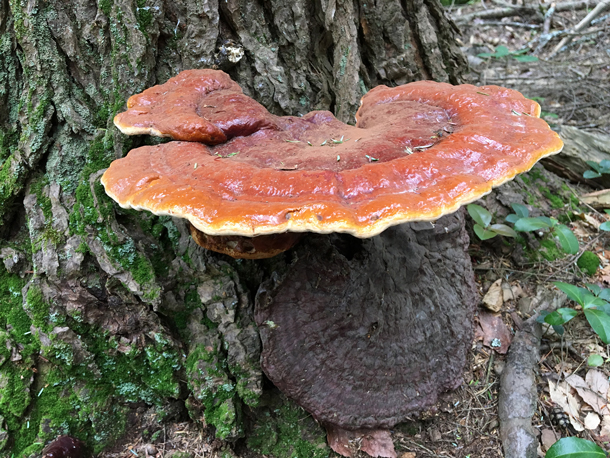
Microbes in the soil of the heated test plots, such as fungi, were able to break down more complex carbons and release them into the atmosphere. (Photo: Flickr, Plant Image Library, CC BY-SA 2.0)
MELILLO: Yes, I think that's exactly correct, and one of the problems, of course, is that, with this soil feedback that we're talking about, the problem is a ubiquitous problem because there are microbes that have the capability of decomposing soil organic matter across the globe, and there are no obvious switches for turning that behavior off, so it's not like you're going to shut down a few hundred coal-fired power plants by flipping the switches in their control rooms. Here you're dealing with microorganisms that respond to their environment, and it's going to be very difficult to control that response.
CURWOOD: So, in your study you find that the carbon loss across this period wasn't constant. It varied. Why?
MELILLO: We think there are a couple of reasons for that. One is that we think we saw the shift in the structure of the microbial community over time, and with that shift in structure we saw a shift in microbial function that includes the breakdown of soil organic matter and the production of CO2.
Secondly, we think that, at various times during the course of the study, warming led to increased microbial activity that resulted in the loss of different kinds of soil organic matter. In the early part of the study is the loss of relatively simple soil organic matters like sugars, starches, and some carbohydrates; whereas, in the latter part of the study, we saw the loss of more complex compounds, such as lignin and these compounds were being broken down by microbes, once they had exhausted the simpler carbon pools.
CURWOOD: So, your research suggests that as the soil starts to warm, there’ll be an initial burst of CO2. What was the time frame that you saw the initial uptick of a substantial amount?
MELILLO: So, the initial burst began almost immediately upon warming, and that phase of the response, that burst of CO2, lasted for about a decade, but over that decade the rate of release of CO2 in response to warming began to drop off, such that, at the end of that decade, warming did not appear to result in an increased release of CO2 from the soils relative to the release of CO2 from the control plots.
Then we entered a period of about five or six years, I'll call it "quiescent period," when we think that the microbial community was reorganizing itself, and between 2008 and 2013 we think that the microbes were able to attack more difficult-to-decompose soil carbon compounds.
Finally, in the last couple of years, we have evidence that we've gone into a "quiescent period" again, but we're not sure how long that is going to last, nor are we sure about what will happen next.
CURWOOD: How applicable do you think your research is to other forests of the world? You picked a place in North America, a deciduous forest outside of Boston. Elsewhere in the planet there are very different trees and very different ecosystems.
MELILLO: Very different trees, very different ecosystems. Rather similar structures to the organic matter in the soils of the world, so clearly that's an important question. We'd like to have many more long term studies like ours. There are some reasons to believe that in tropical soils there might be some differences in terms of the quantitative response, but right now I think it's important for us to first of all try to promote additional long-term research like we've done and also to use the information that we've gained to help develop models of soil organic matter decay, to project how forests that are different from the ones that we work in might respond.
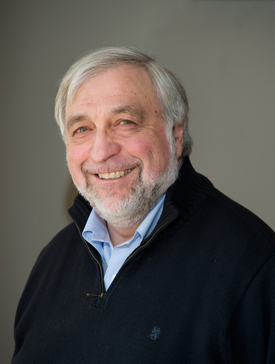
Jerry Melillo is a Distinguished Scientist at the Marine Biological Laboratory in Woods Hole, Massachusetts. (Photo: Courtesy of Jerry Melillo)
Moving outside of forests, Steve, I think it's important to recognize that this soil feedback phenomenon could be particularly important in high-latitude soils, including the soils of the Arctic, some of which are currently in a frozen state such that the soil organic matter is not decomposing because it is locked in ice. We know that high-latitude ecosystems are warming more rapidly than other places on the planet, and this frozen soil, this permafrost soil, is thawing, and we also know that once that permafrost soil thaws, the organic matter in that thawed soil is full of relatively easy to decompose compounds, and we expect very rapid decomposition and a flux of carbon dioxide into the atmosphere if the soils, once they thaw, are well drained. If the soils once they thaw remain wet, then there's also the possibility that methane, another heat trapping gas, would become a dominant product, and that news is not good because methane is a more powerful greenhouse gas than is CO2.
CURWOOD: Jerry Melillo is a Distinguished Scientist at the Marine Biological Laboratory in Woods Hole, Massachusetts. Thanks so much for taking the time with us today.
MELILLO: Steve, it was a pleasure. Thank you.
Related links:
- Melillo et al., Science Mag: “Long-term pattern and magnitude of soil carbon feedback to the climate system in a warming world”
- About Jerry Melillo
[MUSIC: Inca Son, “Arbol tierno (Sapling)” on Inca Son, Volume II, Vamos a mi tierra, by Miguel U. Jimenez, self-published]
CURWOOD: Coming up, growing daylight between the public and daylight saving time. That’s just ahead here on Living on Earth. Stay tuned.
ANNOUNCER: Funding for Living on Earth comes from you our listeners, and United Technologies, combining passion for science with engineering to create solutions designed for sustainability in aerospace, building industries, and food refrigeration. UTC companies such as Otis, Carrier, Pratt & Whitney, and UTC Aerospace Systems are helping to move the world forward. You can learn more about United Technologies by tuning in to the “Race to 9 Billion” podcast, hosted by UTC’s Chief Sustainability Officer. Listen at raceto9billion.com. That’s raceto9billion.com.
This is PRI, Public Radio International.
[CUTAWAY MUSIC: Inca Son, “Arbol tierno (Sapling)” on Inca Son, Volume II, Vamos a mi tierra, by Miguel U. Jimenez, self-published]
The Living and Dead in Good Company

Leaves fall around headstones in Mount Auburn Cemetery. (Photo: Maureen Gilreath, Flickr CC BY-2.0)
CURWOOD: It’s Living on Earth, I’m Steve Curwood.
You might have trouble unravelling the common thread that links cookbook author Fannie Farmer, poet Henry Wadsworth Longfellow, and art collector Isabella Stewart Gardner, but all three of these nineteenth century luminaries lie peacefully, we trust, in America’s first garden cemetery. And the book, Dead in Good Company, celebrates not only these famous people, but also the wildlife that Mount Auburn cemetery is now famous for.
On a crisp autumn day, I headed through cemetery’s wrought-iron gates to take a walk with the book’s creators, including co-editor John Harrison.
[BIRDSONG]
HARRISON: The idea was for this to be a garden cemetery, when it was created in 1831 by Jacob Bigelow, and as you can see from the hills and valleys, the bodies of water, it is very much different than the ordinary cemetery.
CURWOOD: So we're here in the cemetery, and around your neck you have a strap of binoculars, which reminds me, I first really heard about this place as a birding spot.
HARRISON: Oh it is. It's a bird sanctuary and wildlife sanctuary, in addition to birds, other wildlife also.
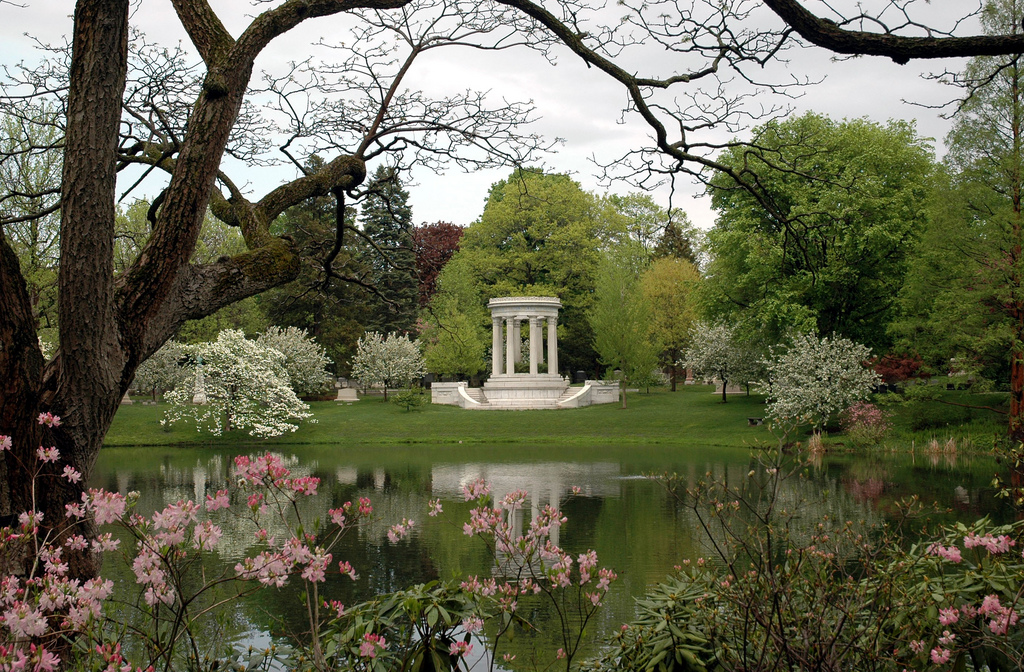
Spring arrives at Halcyon Lake, Mount Auburn Cemetery (Photo: Friends of Mount Auburn, Flickr public domain)
CURWOOD: So, why is it so popular with birders?
HARRISON: Well, first of all of, this is on the migration path, and if you come here in May it's like a carnival here. There are hundreds of people running around with binoculars, with cameras, looking up because these are birds you only see once a year coming up from the south. Birding is the kind of thing that, once you get into, it gets under you skin.
CURWOOD: The birders who are listening to us are going to say,“so what do you have on your list from being at Mount Auburn cemetery?”
HARRISON: On the list, well, just for instance how unusual this can be, one of the very best birds that you see at the spring migration is the Cape May Warbler. It's spectacular because they fly all night, and when the sun comes up, the first green place they see, they all descend. Indigo Bunting is another special bird. Then the regular, well, call them the usual suspects, the Magnolia warblers, the Vireos, Black-throated Green Warblers, Black-throated Blue, Chestnut-sided Warblers.
CURWOOD: And what about the raptors?
HARRISON: Well, we have a resident pair of Red-tailed Hawks. They're my favorite species since the beginning. They're always here. They're a regular part of the scene.
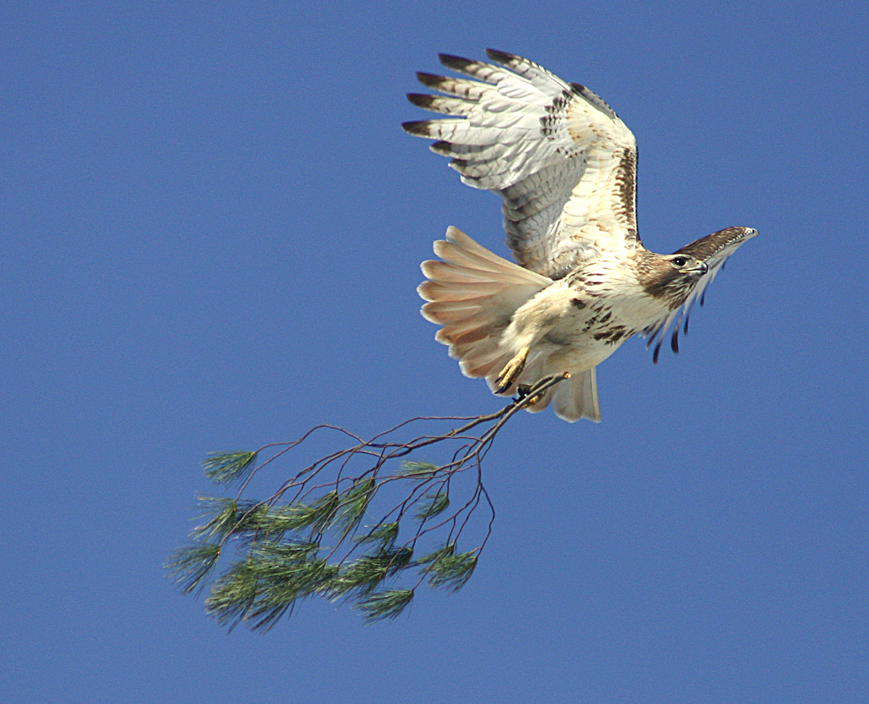
A red-tailed hawk—nicknamed “Lucy” by John Harrison—carries a spruce branch to her nest in Mount Auburn Cemetery, and her species inspired one of Harrison’s essays. (Photo: John Harrison)
CURWOOD: Ahh, so that's how they keep the squirrels down here, huh?
HARRISON: Yeah, that's exactly right. That's their favorite dish. Yep. I've been watching, and you will see one swoop down on an unsuspecting squirrel, and that's it.
CURWOOD: So how big is this place and how many people are buried here?
HARRISON: I'd say 175 acres. There's about 100,000 people buried here.
CURWOOD: And there are some pretty famous people buried here, right?
HARRISON: Yes. Yes, indeed. Quite a few famous people. Jacob Bigelow, one of the founders of the cemeteries here, and Bigelow chapel is named after him. Charles Bullfinch, the architect. Buckminster Fuller, Bucky Fuller's here. Curt Gowdy, the sportscaster of the Boston Red Sox. Winslow Homer. Bernard Malamud, the author, he's at Willow Pond. Arthur Schlesinger Jr.'s here. B.F. Skinner. Henry Cabot Lodge. Edwin Booth, John Wilkes Booth's brother, he's here. There are senators, mayors, congressmen, judges, and I can't even keep up with all of them. We're mostly, Kim and I, we're here for the wildlife.
CURWOOD: And Kim, of course, is your...
HARRISON: Co-editor.
CURWOOD: Co-editor. And both of you wrote some essays for this.

Mount Auburn Cemetery is a popular stopover spot for migrating birds, including the Canada warbler. (Photo: Kim Nagy)
HARRISON: Yes, we each wrote an essay. Mine about Red-tailed hawks, and Kim specifically about the Great Horned Owl pair. Her first time here was that year 2011 when the Great Horned Owls had two owlets, and we got to see up close and personal the lifecycle of this fantastic species.
CURWOOD: So, Kim Nagy, you are the co-author of this book, "Dead in Good Company: A Celebration of Mount Auburn Cemetery,” and you wrote about owls. Why?
NAGY: Well, I likened the experience of the owls with an experience I was having with my mother who had moved here and had dementia, and it was a tough time. What I found most interesting was that, in watching the owlets grow, they were learning how to build a roadmap for their new life, and I was learning how to build a new roadmap for my current situation.
CURWOOD: So, here you are in a cemetery building new life.
NAGY: Well, as Mount Auburn cemetery was created to change people's idea of death and burial and dying in 1831, with our book we wanted to show that this is not just a cemetery, but it's a place of life, regeneration, growth, rebirth. And so, to chronicle the lives of the owlets -- We knew everything about them, their parents, we named them, and their first flight and everything else -- we thought it was very apt.
CURWOOD: So, hey, John so what do you mean by your book titled, "Dead in Good Company." Whose company is that?
HARRISON: Oh, all the souls that are buried here. All the spirits that are buried here.
CURWOOD: So can I ask you, is this place haunted?
HARRISON: If it's haunted, it's haunted in a good way. It's haunted by helpful spirits.

The cemetery’s Washington Tower provides a 360-degree view of Boston and its surroundings. (Photo: Bill Damon, Flickr CC BY 2.0)
HARRISON: I was here one night after 11. Joe Martinez, one of our essayists who wrote about the spotted salamanders in the dell and the vernal pool, I was invited to come watch that develop. The night I was here you could shine a flashlight in the vernal pool and she these beautiful spotted yellow salamanders, and it is very different at night. It's a whole different experience.
CURWOOD: Spooky?
HARRISON: Not spooky. Just serene, but different, because it's dark. But it was beautiful.
CURWOOD: What about the owls? [HOOTS]
HARRISON: Well, occasionally we would hear them at dusk. The security guards are here all night, are here throughout the night, they often hear them and see them flying around. So there's more activity because they're nocturnal.
CURWOOD: So Charles Sumner, the famous Massachusetts senator, during the approach to the Civil War, is buried here, and let's walk over to his gravesite.
HARRISON: Sure, sure.
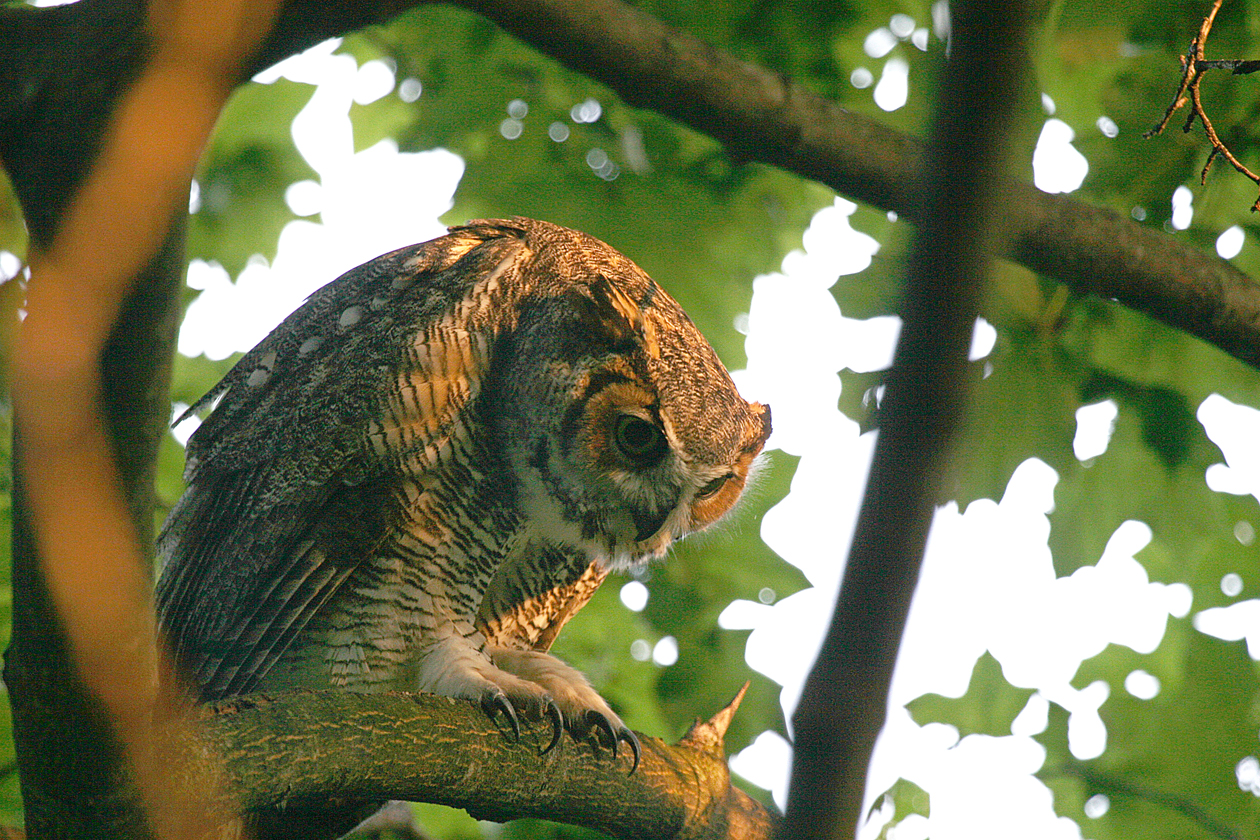
A great horned owl. (Photo: Kim Nagy)
[WALKING AND FOOTSTEPS]
HARRISON: There's a Red-tailed hawk, our guardian, flying over. It must be really great to be a Red-tailed hawk on a day like this.
CURWOOD: Indeed. So who knew that 175 acres of beautiful gardens would become this key wildlife sanctuary for greater Boston?
HARRISON: Yeah, really, really in the center of the city. It's really amazing, but it's because of all the attention to detail. And all of trees, I mean, there are certain bird species like certain trees and certain berry trees and crabapple trees, and there's something for all of them, so when they do land here they stay for a while until they have enough energy to move on.
CURWOOD: So where are we now?
HARRISON: We're at the grave of Charles Sumner and William Martin whose essay, "The Actor and the Hawk", is the first in our book, is going to tell us a little about Charles Sumner.
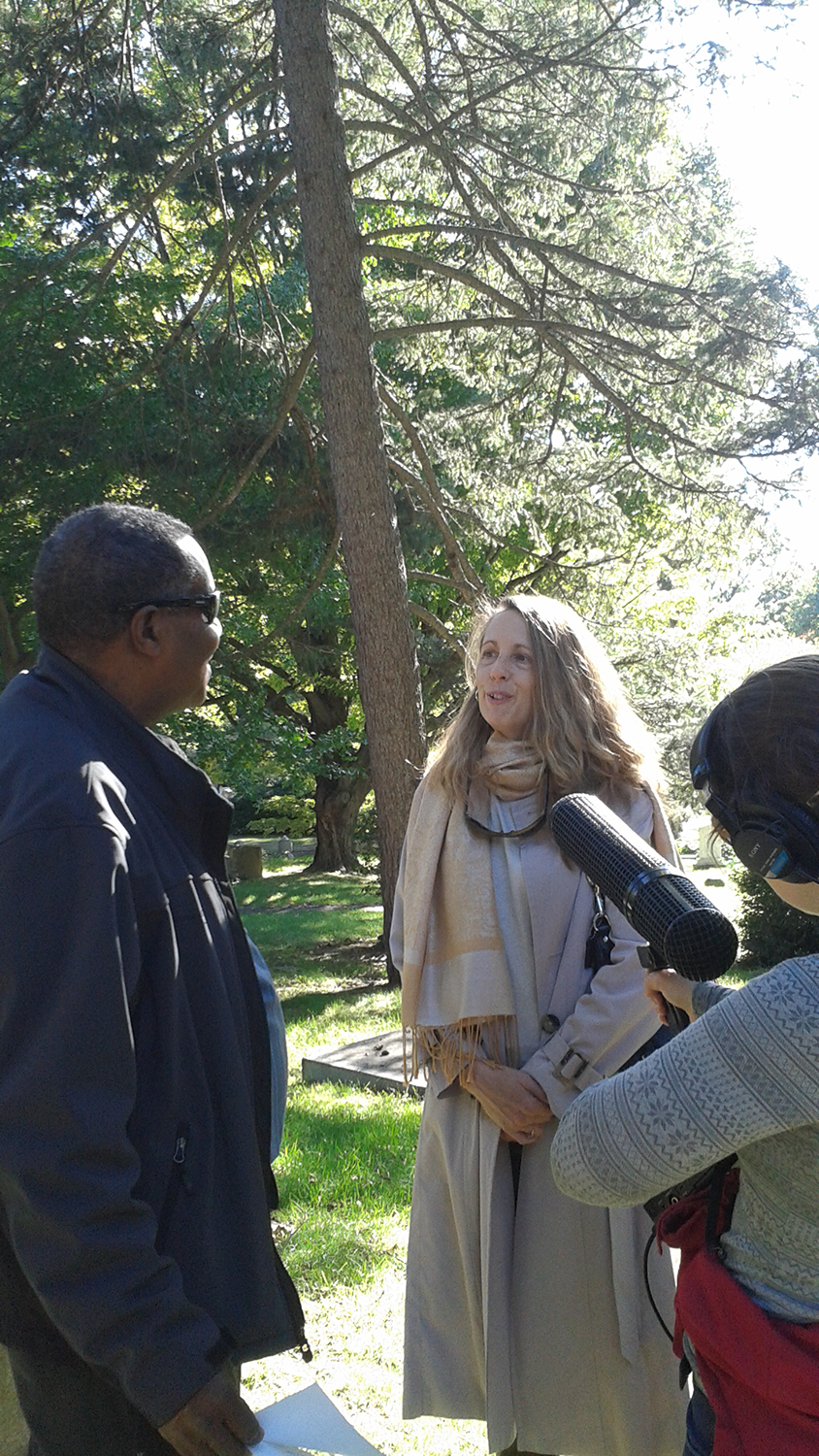
Kim Nagy tells Steve Curwood about her favorite place in Mount Auburn Cemetery, the Consecration Dell where she watched owlets grow up. (Photo: Helen Palmer)
CURWOOD: OK, Bill, what's the story you have for us?
MARTIN: Well, of course, you know that Sumner was one of the leading abolitionist voice in United States Senate in the run up to the Civil War, got himself caned on the floor of the United States Senate as a result of the speech that he gave calling out the senator from South Carolina and some people think that led to the war itself. He came home, he recovered, and after Lincoln was elected, Sumner became, you could say, the sharpest abolitionist thorn in Lincoln's side. On July 4, 1862, Sumner went to the White House to talk to Lincoln. He said to Lincoln that day, “Mr. President, on Independence Day it is time to give the American people a great gift, the gift of emancipation.”
The war was not going well. Sumner understood that a new moral imperative had to be added if the north was to win the war, and Lincoln said to Sumner that day, "Senator, if I free the slaves, three more states will go out of the union, and half my officers will resign.” He was trying to walk a very fine line between men like Sumner who were speaking powerful moral truths to him and people on the other side of the political aisle in the north who were just trying to hold the union together, "And we'll take care of that that slave issue later on." Lincoln told Sumner that day, “Emancipation is a thunderbolt that will keep.” He didn't tell Sumner, however, that he was already writing the Emancipation Proclamation, but the story gives you an idea of the moral voice that Sumner was and the fact that, while Lincoln was a politician and couldn't say out right, "I hear you. I hear you," he heard him.
CURWOOD: How has the Mount Auburn cemetery inspired you and your work? You've written, what, ten books now?
MARTIN: A place like this, for me, because I write historical fiction, is probably more alive than it is to most people because the stories, like the one that I just told you about Charles Sumner, end up being dramatized in my novels, and so it's always a thrill to come where those people have their last resting place.
CURWOOD: Bill, you have an essay along these lines. It's in this book. Could you please read from your essay that opens this book?
MARTIN: Sure.
“Stories are everywhere in Mount Auburn cemetery. Beneath every marker and atop every monument, everyone who lies here lived as a character in his own drama. Some performed grand deeds, others only dreamed them, but the moments they lived were as vivid, as colorful, as hot or cold, as joyous or terrifying as any that we live now.”
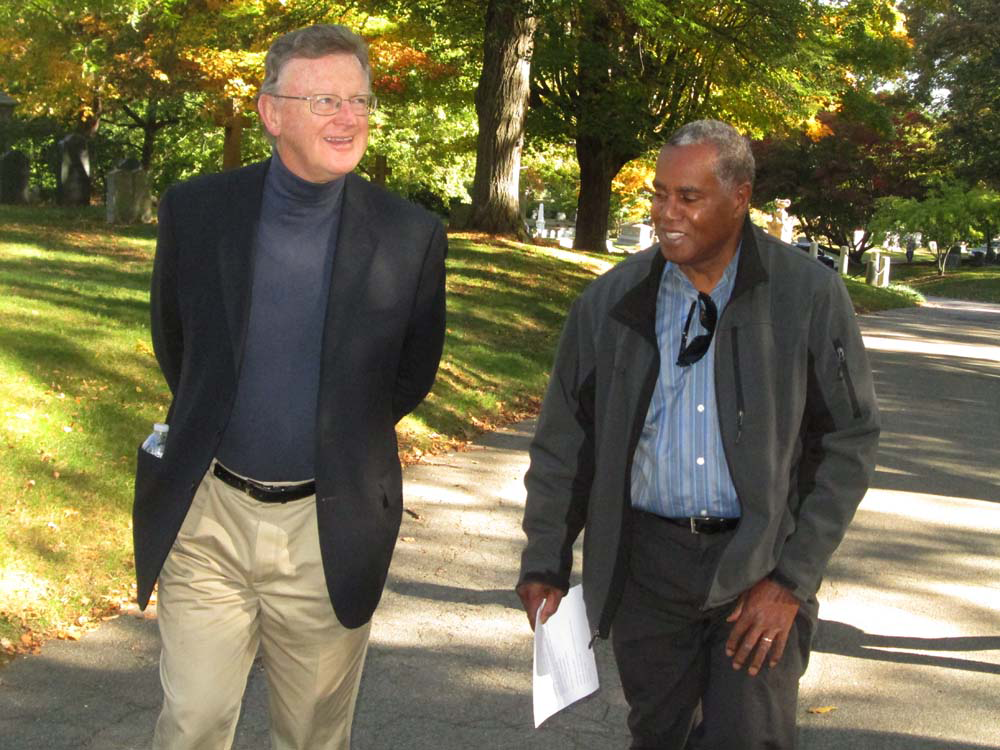
Essayist Bill Martin walks with Steve Curwood to the grave of Charles Sumner. (Photo: John Harrison)
CURWOOD: So, what's your favorite spot in the cemetery. John?
MARTIN: Let's see; my favorite spot is Weeping Beech at the RH White Mausoleum, not too far from here because that's where I studied my first Red-tailed hawk, Lucy, which I wrote about my essay. It's always number one on my checklist when I'm here.
CURWOOD: And Kim Nagy, what's your favorite spot here in Mount Auburn cemetery?
MARTIN: My favorite place in the cemetery is where the owls were in the dell. I think it's a great, mysterious place. It's very beautiful, and that's where the owls flew around right above the vernal pool.
CURWOOD: Bill, your favorite spot in Mount Auburn Cemetery?
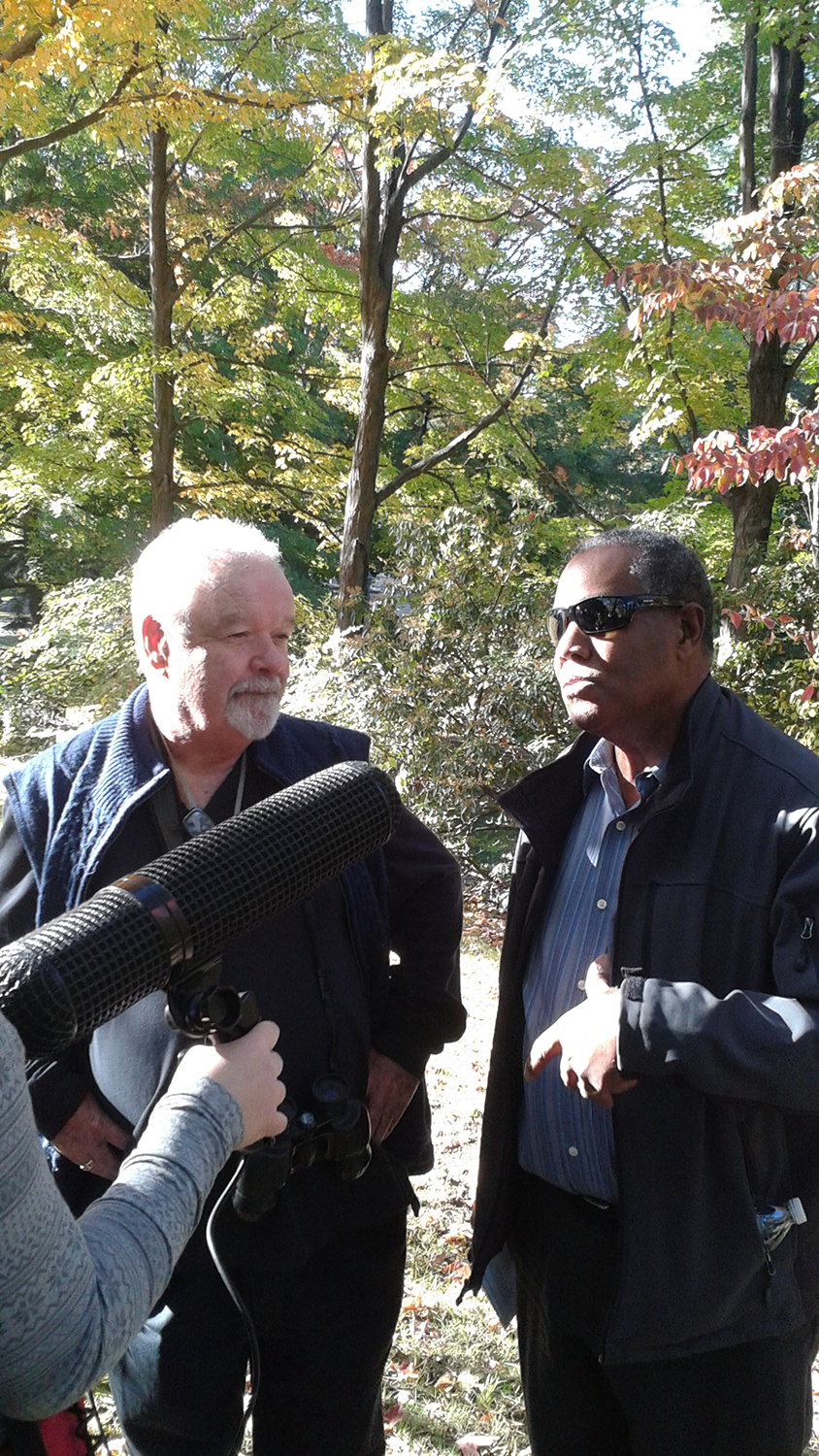
John Harrison talks with Steve Curwood at Mount Auburn Cemetery. (Photo: Helen Palmer)
MARTIN: My favorite spot in Mount Auburn Cemetery is the top of the Washington tower from which you can get yourself a 360° view of the hills of Massachusetts and Boston and the Charles River and Cambridge and all of the places that in so many ways form the landscape of my imagination. And one day we were here, my wife and I with John, on the top of the Washington Tower, and we were surrounded by young hawks, all of them testing their wings, and they were riding the updrafts all around us up there on the top of the tower, swooping and screeching. [HAWKS CALLING] And as I saw them doing this, I have to say I was thinking about the whole cycle of nature and something in Keats’ “Ode on a Nightingale,” and the quote that jumped to mind was,“Thou was not born for death immortal bird, No hungry generations tread thee down. The voice I hear this passing night was heard in ancient days by emperor and clown.”
The whole idea, of course, that we're down here on the ground amidst these magnificent monuments and yet nature's cycle continues and continues in the great circle of those hawks swooping around that tower.
[SOUND OF NIGHTINGALE SINGING]
CURWOOD: Bill Martin is the New York Times best-selling author of 10 novels and an award-winning PBS documentary and more. John Harrison is a book distributor and an avid photographer. He and Kim Nagy are co-editors of "Dead in Good Company: A Celebration of Mount Auburn Cemetery". John, Bill, and Kim, thank you so much for taking the time today.
MARTIN: Thank you, it's been a pleasure.
HARRISON: And, likewise, we appreciate that you allowed us to do this.
NAGY: Thanks so much, Steve.
Related links:
- Mount Auburn cemetery
- The world’s first garden cemetery, Pere Lachaise
- “Landscape Architecture and the ‘Rural’ Cemetery Movement”
- Dead in Good Company: A Celebration of Mount Auburn Cemetery
- Mount Auburn Cemetery is a Mass Audubon Important Bird Area
- The Caning of Senator Charles Sumner
- Keats’ “Ode to a Nightingale”
[MUSIC: Al Petteway and Amy White, “Land of the Sky” originally on Land of the Sky, written by Al Petteway, reissued on the soundtrack to National Parks: America’s Best Idea, National Parks Film Project, courtesy of Maggie’s Music]
The Clock Ticks for Daylight Saving Time
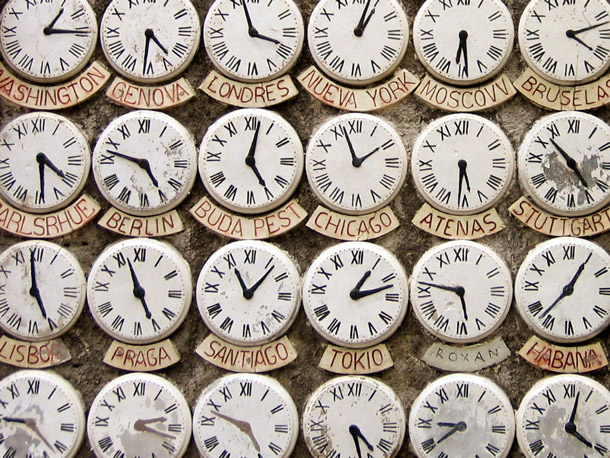
A clock face for every time zone – all 24 of them. (Photo: leoplus, Flickr CC BY-SA 2.0)
CURWOOD: As the days grow shorter in the northern hemisphere, one gets to enjoy an extra hour in bed when Daylight Saving Time comes to an end, and in the US that’s on November 5th. But countries in Asia and Africa don’t change their clocks, and in the US neither do Arizona, Hawaii, Puerto Rico, and parts of Indiana. And recently there has been outright opposition to daylight saving time in California, Florida, Idaho, Michigan, Oregon, Texas. Well, you get the idea. In Massachusetts, a special State Senate commission just voted effectively to stick with daylight saving time year round, but there are still many hurdles before this could become law.
Commission member Peter Shattuck joins me now. Peter, welcome to Living on Earth.
SHATTUCK: Happy to be here.
CURWOOD: So, Peter what's wrong with Daylight Savings Time?
SHATTUCK: Well, Daylight Savings Time, surprisingly, in addition to stealing an hour of daylight from us during winter months, drives up energy prices and greenhouse gas emissions, worsens our public health, actually increases crime, and then my own personal challenge of having two small children who, instead of waking up at 5:30 in the morning will soon be waking up at 4:30 in the morning when we set the clocks back.
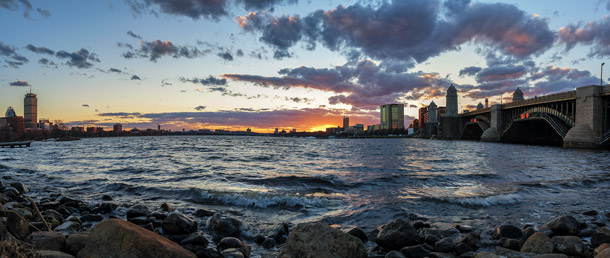
The sun sets on a winter afternoon in Boston. After Daylight Savings Time ends this month, the city will see darkness encroach well before 5 pm. (Photo: Jeff Turner, Flickr CC BY 2.0)
CURWOOD: [LAUGHS] So, you're focusing on the issue of savings time by proposing a change in the time zone, to move Massachusetts to what's called Atlantic Standard Time. What is Atlantic Standard Time, and why would a shift to Atlantic Standard Time help this daylight savings time problem?
SHATTUCK: If we shifted to Atlantic Time, it would effectively be going to Daylight Savings Time on a year round basis. It would mean that for four months of the year when we currently do not observe Daylight Savings Time – so from November until April - we would go with Atlantic Time.
CURWOOD: So, how would extending evening daylight by being on Atlantic Standard Time in the eastern most part of the US in Massachusetts, how would that help save on energy consumption?
SHATTUCK: Well, a lot of it just comes down to when we turn the lights on. So, when we set the clocks back, we gain that hour of daylight in the morning, but we lose it in the afternoon. So, when people are coming home from work or at work or turning their lights on earlier, that creates strain on the grid. What we find is that by setting the clocks back there's a greater increase, about a three percent increase, in electricity consumption during those four months when we're not on Daylight Savings Time compared to a one percent increase in the morning. So, on balance if we didn't set the clocks back for our full Daylight Savings Time, we reduce our evening energy consumption by about two percent, and we are growing significantly reliant on natural gas. When people come home and turn on their lights or bump the heat up a little bit, it means that some of those gas power plants can't get the fuel that they need, so we have to turn on older dirtier units or just keep them around only for those few hours of the year and prices go up.
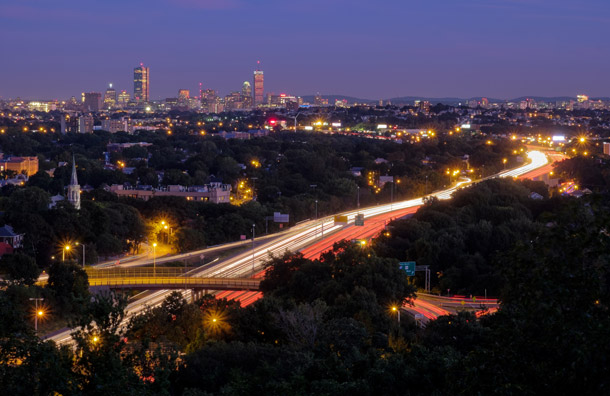
Boston's busy I-93 highway sees heavy traffic in the hours just after dark. A new report by the Massachusetts Time Zone Commission has demonstrated that car accidents increase in probability after the sun goes down. (Photo: Robbie Shade, CC BY 2.0)
CURWOOD: So, your report that you did on this Daylight Saving Time commission also covers the public health benefits. What are those benefits?
SHATTUCK: It's a little surprising the range of impacts. A lot of it makes intuitive sense, but particularly in the spring when we shift the clocks back forward and people drive or go to work drowsy there are more accidents – car accidents, workplace accidents - and also then there's the more, you know, straightforward, if we have more daylight in the afternoon hours during the winter, people tend to be more active.
CURWOOD: So, critics of ending Daylight Saving in these Eastern states argue that another time zone being added to the US would just complicate communications and and hurt the region economically.
SHATTUCK: I think it is important consideration, and that's one of the reasons that the commission is moving towards recommendations that suggest regional coordinated action. You know, we don't want one state doing this alone. That said, we manage all sorts of different time zones and other considerations in our daily lives already. So, we still do business with California or Europe and we're only talking about one hour time difference. So, yes, we want as many states to come along with us as possible but it shouldn't be an obstacle to continuing to have the discussion.
CURWOOD: Now, I understand that as a practical matter you're looking to invite the other New England states to consider this time zone shift. So, to what extent of the other New England states saying, “Hey maybe we should go with Massachusetts and become part of the Atlantic Time zone and do away with Daylight Savings Time”?
SHATTUCK: Four of the five other New England states are actually considering making the move. A lot of them are looking to Massachusetts as the biggest state in New England and a historical leader on a number of issues and saying basically, “If Massachusetts does it, we'll go along.”

Peter Shattuck posing with Steve Curwood in 2014. Shattuck develops micro-grids for the company Anbaric and served on the Massachusetts Time Zone Commission in his previous role, as director of the environmental organization, Acadia Center. (Photo: Emmett Fitzgerald)
There's then a question of how much farther west do we need to go. There is a lot of interaction with New York, financial hub there. Down to DC would be another place to draw the boundary. I think frankly this is a conversation that's going to take a while to bear fruit, so I think a threshold would be all of New England states, and then we see who's going to come with us.
CURWOOD: Peter Shattuck develops clean energy micro-grids and served on the Massachusetts Senate Time Zone Commission. Thanks so much for taking the time today Peter.
SHATTUCK: Thank you for having me.
Related links:
- Massachusetts Time Zone Commission Report
- MassLive: “Time zone commission says Massachusetts should spring forward… forever”
- Boston Globe: Op-ed by Tom Emswiler, “Why Massachusetts should defect from its time zone”
- SACBEE: “California Could End Daylight Saving Time”
[MUSIC: Fred Simon/Bonnie Herman/Liz Cifani, “Time and the River” on Soul of the Machine, composed by Fred Simon, Windham Hill Records, originally released on Time and the River by Quaver Records]
CURWOOD: Living on Earth is produced by the World Media Foundation. Our crew includes Naomi Arenberg, Bobby Bascomb, Savannah Christiansen, Jenni Doering, Noble Ingram, Jaime Kaiser, Don Lyman, Helen Palmer, Adelaide Chen, and Jolanda Omari. Tom Tiger engineered our show, with help from Jake Rego. Alison Lirish Dean composed our themes. You can find us anytime at LOE.org - and like us, please, on our Facebook page - it’s PRI’s Living on Earth. And we tweet from @LivingonEarth. I'm Steve Curwood. Thanks for listening.
ANNOUNCER1: Funding for Living on Earth comes you, our listeners, and from the University of Massachusetts, Boston, in association with its School for the Environment, developing the next generation of environmental leaders. And from the Grantham Foundation for the protection of the environment, supporting strategic communications and collaboration in solving the world’s most pressing environmental problems. Support also comes from the Energy Foundation, serving the public interest by helping to build a strong, clean, energy economy, from Gillman Ordway, and from SolarCity, America’s solar power provider. SolarCity is dedicated to revolutionizing the way energy is delivered by giving customers a renewable alternative to fossil fuels. Information at 888-997-1703. That’s 888-997-1703.
ANNOUNCER2: PRI. Public Radio International.
Living on Earth wants to hear from you!
Living on Earth
62 Calef Highway, Suite 212
Lee, NH 03861
Telephone: 617-287-4121
E-mail: comments@loe.org
Newsletter [Click here]
Donate to Living on Earth!
Living on Earth is an independent media program and relies entirely on contributions from listeners and institutions supporting public service. Please donate now to preserve an independent environmental voice.
NewsletterLiving on Earth offers a weekly delivery of the show's rundown to your mailbox. Sign up for our newsletter today!
 Sailors For The Sea: Be the change you want to sea.
Sailors For The Sea: Be the change you want to sea.
 The Grantham Foundation for the Protection of the Environment: Committed to protecting and improving the health of the global environment.
The Grantham Foundation for the Protection of the Environment: Committed to protecting and improving the health of the global environment.
 Contribute to Living on Earth and receive, as our gift to you, an archival print of one of Mark Seth Lender's extraordinary wildlife photographs. Follow the link to see Mark's current collection of photographs.
Contribute to Living on Earth and receive, as our gift to you, an archival print of one of Mark Seth Lender's extraordinary wildlife photographs. Follow the link to see Mark's current collection of photographs.
 Buy a signed copy of Mark Seth Lender's book Smeagull the Seagull & support Living on Earth
Buy a signed copy of Mark Seth Lender's book Smeagull the Seagull & support Living on Earth

